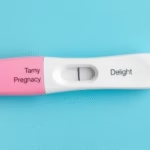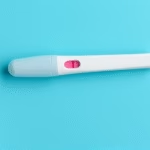Understanding Implantation Bleeding
In this article, we will be talking about implantation bleeding and testing. Implantation bleeding is a light spotting that occurs when a fertilized egg attaches itself to the lining of the uterus. This process typically happens six to ten days after conception. While not every woman experiences this phenomenon, it can be an early indicator of pregnancy. Recognizing the signs of implantation bleeding is important as it differs from a regular menstrual period in both color and intensity. The bleeding is usually light pink or brown and lasts for a few hours to a couple of days, unlike the heavier flow associated with menstruation.
Understanding the characteristics of implantation bleeding helps in distinguishing it from other types of bleeding. Knowing the timing, color, and intensity of the spotting can aid in determining if a woman needs to take a pregnancy test. Generally, women who suspect they are pregnant should pay close attention to these signs, as they may indicate hormonal changes in the body. Testing for pregnancy shortly after experiencing implantation bleeding may yield positive results, paving the way for further medical consultation.
What Causes Implantation Bleeding?
Implantation bleeding occurs due to the process of the fertilized egg attaching itself to the uterine lining. This process is a big step in establishing pregnancy and involves some disruption of the uterus, which can cause light bleeding. In addition, hormonal changes during this time may also contribute to spotting.
The presence of implantation bleeding does not guarantee a pregnancy, but it is a strong indicator that the fertilized egg is successfully implanting inside the uterus. Some women may confuse this bleeding with an early period, but it is generally much lighter. It’s essential for women who suspect they may be pregnant to recognize these signs.
Other factors, such as hormonal changes, cervical irritation, or conditions like fibroids, can also lead to light spotting. Understanding these nuances is important for women trying to conceive.
When Does Implantation Bleeding Occur?
Typically, implantation bleeding occurs about 6 to 12 days after conception. It is essential to understand the timing to accurately assess whether the bleeding is a symptom of pregnancy or a regular menstrual cycle. Most women experience their menstrual cycle approximately every 28 days, which helps to establish a timeline for when to expect implantation bleeding.
Women who track their ovulation cycles can pinpoint their fertile window, making it easier to understand when implantation might happen. It’s important to note that not all women experience implantation bleeding, so its absence does not indicate that pregnancy has not occurred.
For women experiencing bleeding around the expected time of their period, observing the duration and color may give valuable insights. Generally, light pink or brown spotting is associated with implantation, while a heavier, bright red flow is typical of menstruation.
How to Distinguish Implantation Bleeding from Menstrual Bleeding
Many women often wonder how to differentiate between implantation bleeding and the onset of their menstrual cycle. There are specific characteristics that can help in distinguishing the two.
- Timing: Implantation bleeding occurs around 6 to 12 days after conception, while menstrual bleeding usually follows a more predictable cycle.
- Color: Implantation bleeding is usually light pink or brown, whereas menstrual blood falls anywhere from bright red to deep crimson.
- Intensity: Implantation bleeding is typically very light and does not require a pad or tampon, while menstrual bleeding entails a heavier flow that may necessitate the use of menstrual products.
- Duration: Implantation bleeding tends to last for a few hours to a couple of days, whereas menstrual bleeding can last anywhere from 3 to 7 days.
Being aware of these differences can help women better prepare for either potential pregnancy or the arrival of their menstrual cycle.
Testing for Pregnancy After Implantation Bleeding
Once a woman identifies symptoms of implantation bleeding, the next logical step is testing for pregnancy. Pregnancy tests are designed to detect the hormone hCG (human chorionic gonadotropin), which begins to surge shortly after implantation occurs.
Testing too early, however, can result in a false negative. It is generally recommended to wait at least until the first day of a missed period for more accurate results. Most home pregnancy tests are sensitive enough to detect low levels of hCG, but timing is critical.
Additionally, some women may choose to consult a healthcare professional for a blood test, which can provide more accurate results sooner than home tests. Understanding when to test is crucial for women who suspect they might be pregnant.
Signs of Pregnancy Beyond Implantation Bleeding
While implantation bleeding can be a primary indicator of pregnancy, there are several other signs women might experience.
- Missed Period: This is often the first sign women notice.
- Nausea and Vomiting: Commonly referred to as morning sickness, this can occur at any time of the day.
- Breast Changes: Women may notice tenderness, swelling, or changes in the color of their nipples.
- Fatigue: A common experience early in pregnancy due to hormonal changes.
- Frequent Urination: Often results from hormonal shifts in the body.
Understanding these signs, along with recognizing implantation bleeding, can help women better navigate early pregnancy symptoms.
When to Consult a Doctor
Consulting a healthcare professional is advisable under certain circumstances. Women should seek immediate medical attention if they experience heavy bleeding, sharp pain, or if the bleeding lasts for an extended period. These can be signs of complications such as ectopic pregnancy or miscarriage.
In addition, consulting a doctor early can help verify pregnancy and provide women with the necessary information and steps to ensure a healthy pregnancy journey. Regular check-ups are fundamental for monitoring both maternal and fetal health as pregnancy progresses.
Final Thoughts
Understanding implantation bleeding and its implications in the context of pregnancy is essential for women trying to conceive. Recognizing the signs, such as timing, color, and intensity of the bleeding, can help in distinguishing it from regular menstrual bleeding.
Testing for pregnancy soon after implantation bleeding is a common next step. However, patience is key, as testing too early might yield inconclusive results. Being aware of additional pregnancy symptoms can also aid in confirming or denying initial suspicions of being pregnant. If there are any unusual symptoms or prolonged bleeding, medical consultation is crucial.
Staying informed about these aspects of reproductive health can better equip women to navigate the complexities of conception, early pregnancy, and any potential issues that may arise. Making educated decisions and seeking professional healthcare advice can pave the way for a healthy pregnancy journey.
Frequently Asked Questions
1. What does implantation bleeding look like?
Implantation bleeding typically appears as light pink or brown spotting, much lighter than a normal menstrual period.
2. How long does implantation bleeding last?
Generally, implantation bleeding lasts a few hours to a couple of days at most.
3. Can you get a positive pregnancy test after implantation bleeding?
Yes, it’s usually recommended to test around the time of a missed period for the most accurate result.
4. What if my implantation bleeding turns heavy?
If it becomes heavy or is accompanied by sharp pain, it is necessary to consult a healthcare professional promptly.
5. Is implantation bleeding a guarantee of pregnancy?
While it is a common sign of pregnancy, not all women experience implantation bleeding, and its absence does not confirm non-pregnancy.
Further Reading
What Type of Psychotherapy Is Best for Anxiety?







